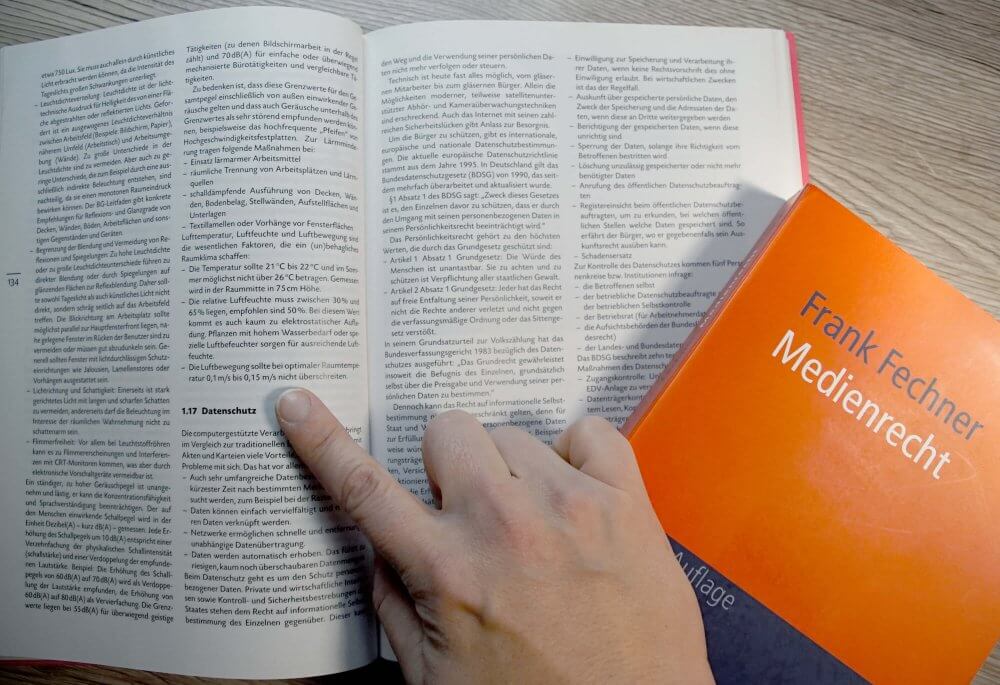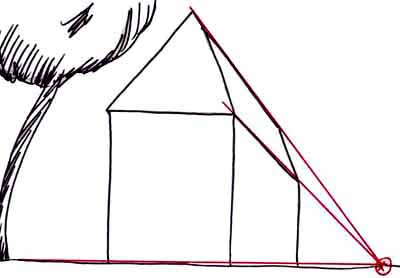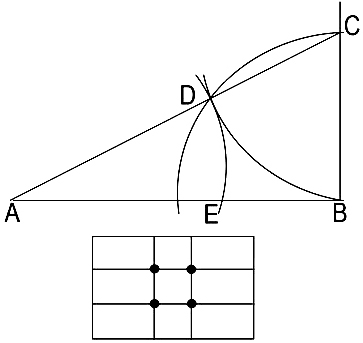German Art Law
Here you will find the basic information about art law, i.e. copyright, right to one’s own image and what you have to consider as an artist, especially if you put your images on the Internet or look for photo templates for your images there.

What laws must be observed?
The most important law for artists in Germany is the Kunsturhebergesetz (KunstUrhG).
Note
I do not give legal advice here, but only an overview of the legal situation in Germany. In addition, I do not guarantee completeness and 100% correctness. If necessary, read the linked legal texts again or get advice from a specialist lawyer.
What laws must be observed?
The most important law for artists in Germany is the Kunsturhebergesetz (KunstUrhG).
Note: I do not give legal advice here, but only an overview of the legal situation in Germany. In addition, I do not guarantee completeness and 100% correctness. If necessary, read the linked legal texts again or get advice from a specialist lawyer.
Questions and Answers
What laws exist in the field of art law?
The most important laws that one should be aware of are copyright law, trademark law, and the right to one’s own image.
What does copyright protect?
Copyright protects creative works such as images, photos, music, film, books, and other texts. Pure ideas are not protected.
From when are my images protected?
You do not need to register or mark your images anywhere for them to be protected by copyright. Your images or photos are immediately protected as long as the necessary level of creativity is reached.
What does “necessary level of creativity” mean?
In order for a creative work to be eligible for protection, it must reach the necessary level of creativity. In the case of photos, this is usually (almost) always the case. It becomes interesting with other images or texts. Your image should be complex, extensive, and unique enough to constitute an independent work.
For example:
A GIF graphic (e.g., a smiley) may not reach the necessary level of creativity because it consists of only a few strokes and does not require much creative effort to create. On the other hand, a manga drawing does reach the necessary level of creativity because much more effort and creative energy had to be invested in its creation. Manga images are therefore protected by copyright.
How long does the protection last?
Copyright generally lasts until 70 years after the death of the author. However, note that copyright can also be inherited. For some specific types, there are different timeframes that should be considered.
Can I sell copyright?
No. You always remain the author of an image. You can only sell, give away, or transfer the necessary exploitation, reproduction, and usage rights.
What should be considered in drawing competitions?
Even though you always remain the author of an image, you should be cautious and have a healthy amount of distrust, especially in painting and drawing competitions. You should always carefully read the terms and conditions of such competitions and, if necessary, seek advice.
The problem is that through specific formulations in the conditions, the organizer of the competition can be granted all rights to your image, even if your image did not win. Moreover, such organizers often reserve the right to publish all participating images whenever, wherever, and however they want.
So if you don’t want your image to appear on any promotional flyers, read the terms and conditions carefully. It is really annoying that you may no longer be allowed to publish your own image if you are unlucky. If you are under 18, your parents must agree according to German law anyway.
What about copyright?
Copyright is a protection right that is only used in the United States and does not exist in Germany. Unlike copyright, where creative works are protected immediately without any registration, in the United States, corresponding works need to be registered with the authorities to be protected.
Meanwhile, the USA has an unofficial art law called the “Fair Use” rule. Artists make their works available for free use by other artists, and in turn, they use materials from other artists who have made their materials available for free use. In Germany, works that are (more) not protected by my art law are called “public domain”.
What is the difference between copyright and trademark law?
Copyright primarily protects cultural and artistic works and aims to remove barriers to cultural innovations and publications. It belongs to German private law.
On the other hand, trademark law applies to commercial transactions. It falls under industrial property protection.
What am I not allowed to do with someone else’s images?
Without the permission of the copyright holder (the creator of the image), you must not publish the image yourself (e.g., on your website, in forums, as an avatar, on any internet platforms, or in printed form such as posters), even if you found it on the internet, newspapers, or books.
Even if you alter the image, it doesn’t change the fact that it is protected by copyright. You even need permission to modify the image before publishing it.
So what can I do with someone else’s images?
For personal use (without publication), the copyright holder is unlikely to prohibit you from saving the image, for example, for idea collections. The copyright holder is also unlikely to prevent you from drawing the image. However, if you want to make the image public, it becomes problematic.
If you have traced someone else’s image and want to show it to friends and acquaintances, for example, in forums, you should be aware that your image either needs to be significantly different from your reference (forming its own work) or you may need to ask the copyright holder for permission if necessary.
How do I obtain permission from the copyright holder?
First of all, you should know who the copyright holder of the image you want to publish is. Then you can contact them in writing or by phone to obtain usage and exploitation rights.
It is advisable to always obtain written permission to prevent potential disputes later on. Be aware that the copyright holder has the right to demand licensing fees for these rights and can limit these rights temporally or to specific projects and types of use.
What can I do if my images have been “stolen”?
If you want to find out if someone has unlawfully published your images on the internet, you can use online tools such as TinEye or hire paid service providers. If you know someone who has published your image, you can try to politely ask them to remove it.
However, you also have the option to legally warn and demand licensing fees from the person (it is best to consult a specialized attorney in copyright and trademark law for this). Keep in mind that most copyright infringers are unaware and usually have no malicious intentions. Therefore, try to avoid resorting to aggressive legal actions if possible.
Can I use images from the internet as references for drawing exercises?
As mentioned above, you are allowed to do this. However, you cannot publish your reference. If you want to publish your traced image, make sure it is significantly different from the original and forms an independent work. When in doubt, it is always better to obtain permission from the copyright holder.
Why am I allowed to use other people’s works in school?
The legislature has provided special exceptions for educational institutions, which apply only to school education.
What can others do with my images?
Others are bound by copyright, just like you. They cannot publish your image, even in modified form, without permission from you.
How can I protect my images?
The best way is not to upload them to the internet in the first place. Unfortunately, there is always a possibility that someone else may republish your images elsewhere.
You can, of course, add watermarks to your images so that everyone can immediately see that they are yours, but whether this truly protects your images is another matter.
What should be considered with photographs?
Photographs are also subject to copyright. They have specific designations and protection regulations. In essence, they are subject to almost the same rules as other images.
Can a photographer display my photo in a shop window?
In short, no. In addition to copyright, there is the “right to one’s own image” as another art law. This is regulated in § 22 of the German Copyright Act (KunstUrhG). Just as you cannot post your passport photo on your website without the photographer’s permission (due to copyright), the photographer cannot display your photo in their shop window without obtaining your permission.
Does the right to one’s own image always apply?
There are exceptions in art law. The right to one’s own image applies in cases where the photo clearly shows you, and you are obviously the main subject of the photo.
However, if, for example, you are in a shopping street and the photo shows the crowd and the shopping street itself as the main subject, the right to one’s own image does not apply to every individual pedestrian shown in the crowd.
Furthermore, within the scope of reporting, photos (always considering copyright) of politicians, actors, musicians, or other public figures (celebrities) can be published without their permission.
Additional Pages

























